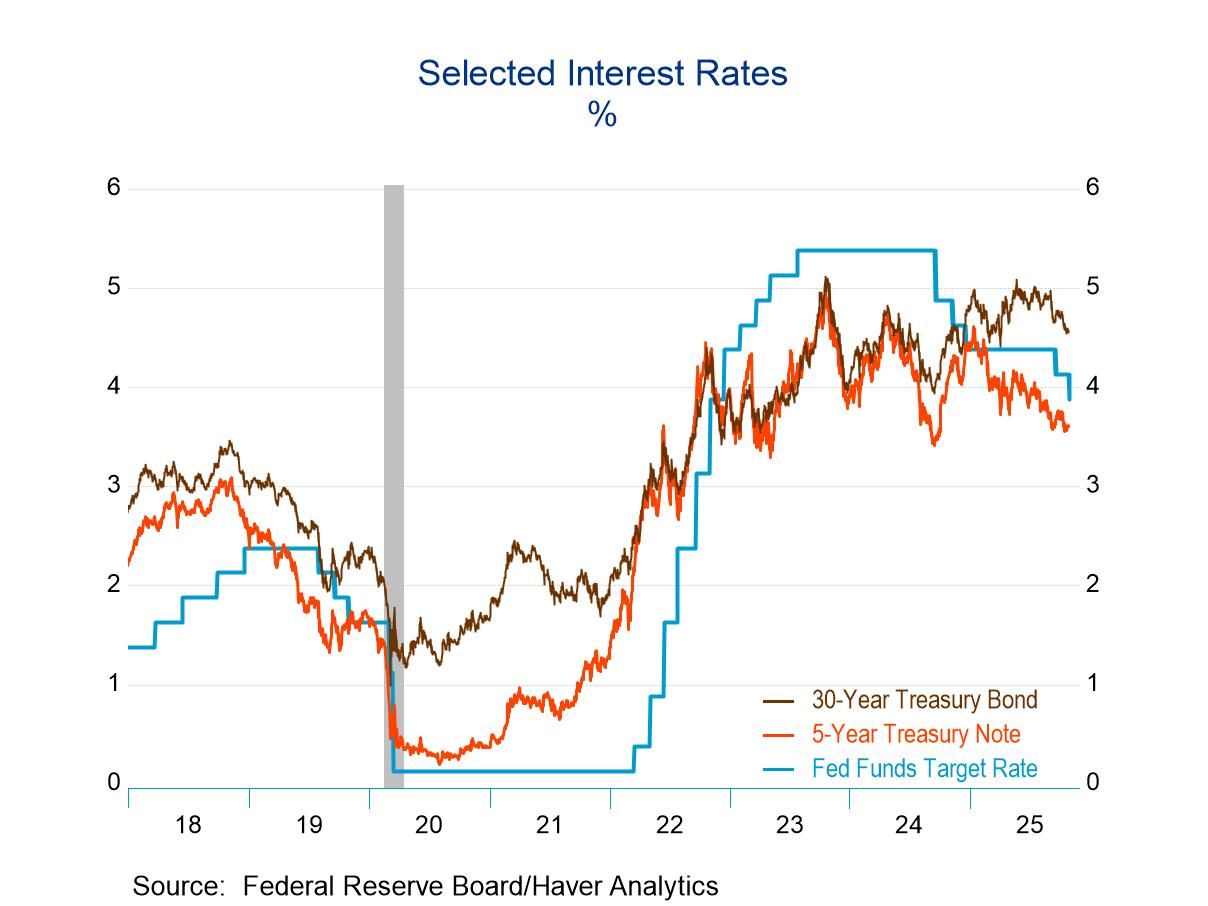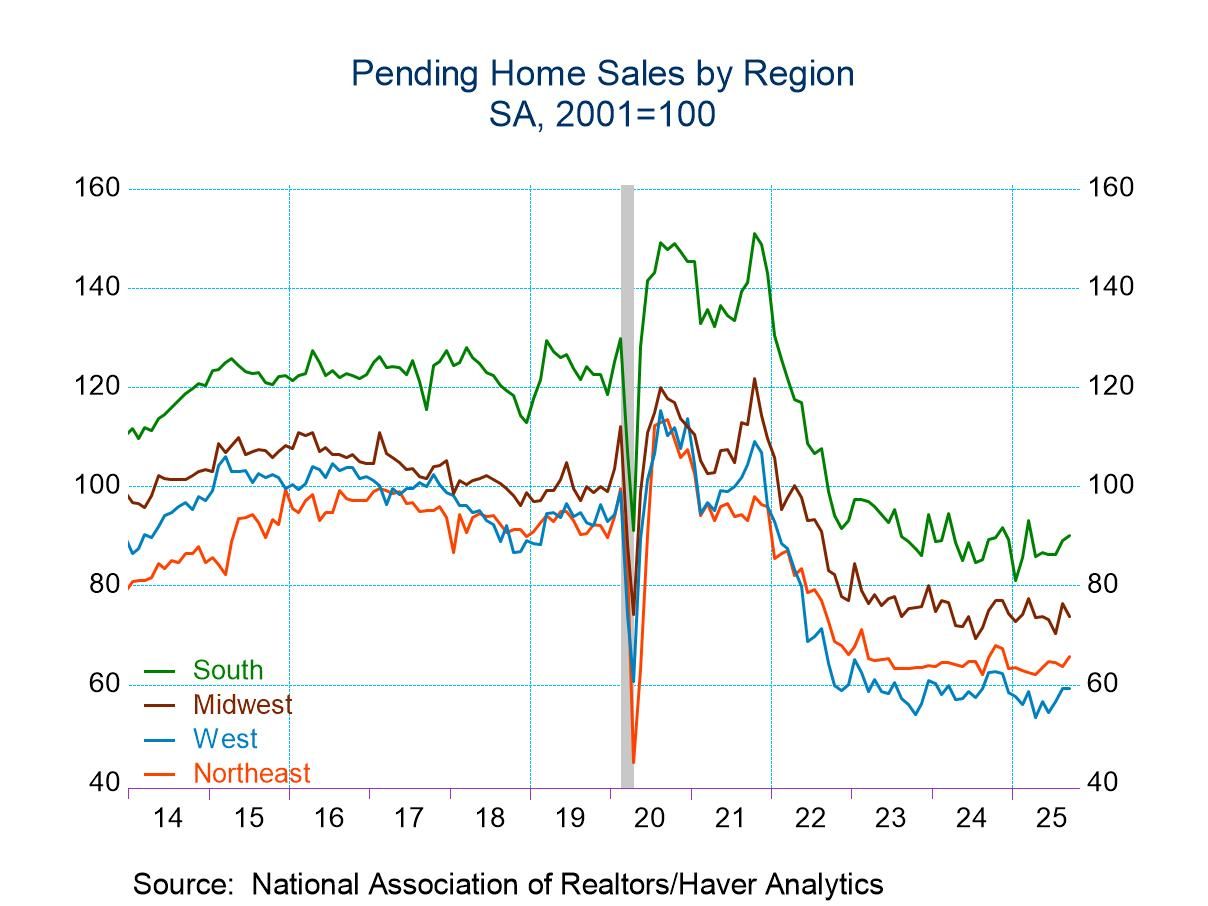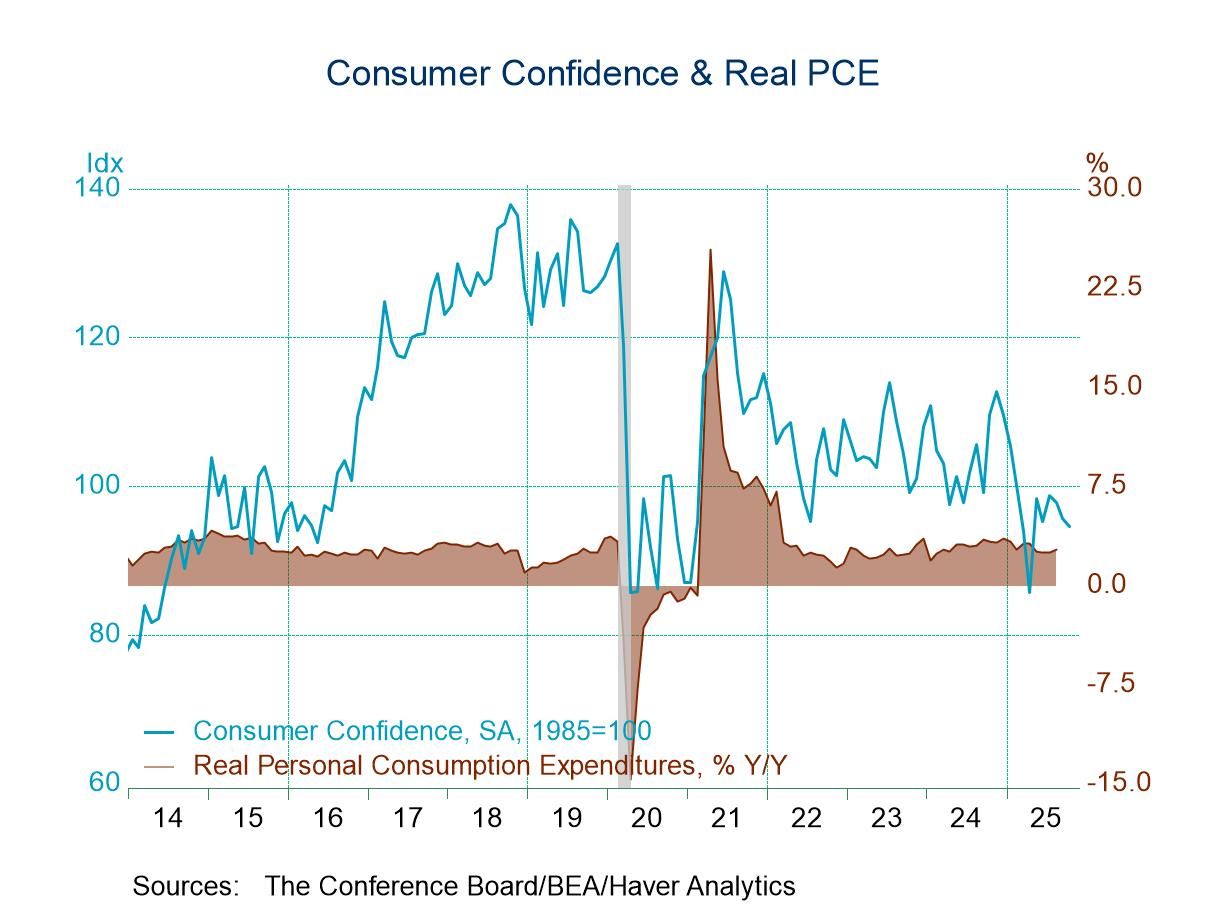 Global| Oct 04 2011
Global| Oct 04 2011Can China's Service Industry Take Up The Slack in Manufacturing?
Summary
The excess of optimists over pessimists among Chinese Purchasing Managers in the service industries rose to 53.00 in September from 50.64 in August foreshadowing increased output. Yesterday it was reported that the there was a slight [...]
 The excess of optimists over pessimists among Chinese Purchasing
Managers in the service industries rose to 53.00 in September from 50.64
in August foreshadowing increased output. Yesterday it was reported
that the there was a slight excess of pessimists among the Chinese purchasing
manages in the manufacturing sector, suggesting that lower output from the
manufacturing sector may be in the offing. The PMI for manufacturing
was 49.95 just below 50 which marks the dividing line between contraction
and expansion. The PMIs for the manufacturing and the service
industries are shown in the first chart.
The excess of optimists over pessimists among Chinese Purchasing
Managers in the service industries rose to 53.00 in September from 50.64
in August foreshadowing increased output. Yesterday it was reported
that the there was a slight excess of pessimists among the Chinese purchasing
manages in the manufacturing sector, suggesting that lower output from the
manufacturing sector may be in the offing. The PMI for manufacturing
was 49.95 just below 50 which marks the dividing line between contraction
and expansion. The PMIs for the manufacturing and the service
industries are shown in the first chart.
While China is noted for its production of goods, provisions for services are almost as important. The Chinese divide output into three categories: Primary, including agriculture, animal husbandry, fishing and forestry; Secondary, including mining, quarrying, manufacturing and the supply of gas and electricity; Tertiary, which includes all activity not classified under Primary and Secondary. Manufacturing dominates the Secondary and Service, the Tertiary categories. Growth in the Primary Sector, in real terms, has been relatively steady at between 3% and 5% in a year. Real Growth in the Secondary and Tertiary sectors account for China's high growth rate. There has been some deceleration in China's real growth recently. From a rate of 11.9% in the first quarter of 2010, growth has declined to 9.6% in the second quarter of 2011. During this period, growth in Tertiary production declined from 10.2% to 9.2%, a much smaller decline that that in the Secondary production which declined from 14.5% to 11.0%. Growth in total GDP and Primary, Secondary and Tertiary Production are shown in the second chart.
Over the years, there has been a steady decline in the share of primary production in total output. From a share of about 15% in 2000 primary production now accounts for about 10%. Both Secondary and Tertiary production have increased their shares of total output, Secondary production has gone from 45% to 47% from 2000 to the present while Tertiary production has gone from 39% to 42%. The shares of Secondary and Tertiary production are shown in the third chart.
Further increases in the share of services in China's total output will depend on how soon and how vigorously the government makes good on its promise to shift policy from export oriented growth to one based on increasing domestic demand.







